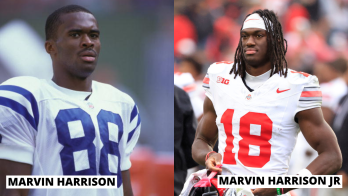Microaggressions are like tiny paper cuts to the soul. They’re the subtle, often unintentional comments, snubs, or actions that communicate derogatory or negative messages towards marginalized groups. While they may seem insignificant on the surface, their effect can be hurtful and may damage people emotionally over time.

Source: Jacob Wackerhausen / Getty
These microaggressions can take various forms, from comments about someone’s race, gender, or sexual orientation, to insults regarding someone’s socioeconomic status. People can also express microaggressions subtly, like ignoring or invalidating someone’s lived experience. They can occur in everyday interactions, in the workplace, at school, or even within close relationships.
One of the difficult aspects of microaggressions is that they’re often delivered with no ill intent. The person making the comment might genuinely believe they’re being harmless or even complimentary. However, the impact is still the same—a reinforcement of stereotypes, a subtle reminder of one’s marginalized status, and a feeling of being “othered.”
It’s crucial to recognize that the harm caused by microaggressions is not just about individual instances but about the broader societal context in which they occur. They perpetuate systems of oppression and reinforce power imbalances. They contribute to a culture where certain groups feel unwelcome, invalidated, or constantly on guard.
Black men and women are disproportionately impacted by microaggressions.
Black men and women face microaggressions on a day-to-day basis, and unfortunately, the workplace often exacerbates this disparity.
In professional settings, Black individuals frequently encounter subtle yet harmful remarks, actions, or attitudes that convey derogatory messages based on their race or gender. These microaggressions can range from dismissive comments to biased treatment in hiring, promotion, or everyday interactions.
A study co-commissioned by Dove and LinkedIn in 2023 found that Black women were 2.5 times more likely to be seen as unprofessional by wearing their natural hair in the office. Around 54 percent of participants said they felt the need to wear their hair straight to be seen as a professional or deemed successful. Some women said they experienced uncomfortable microaggressions from coworkers or higher-ups when wearing their natural hair or textured hair in the workplace.
“More than 20 percent of Black women aged between 25-34 had been sent home from work because of their hair,” the study noted.
While remote work has provided a reprieve for some Black workers from workplace microaggressions, it has also brought new challenges to light.
According to a 2021 survey conducted on Slack, after the pandemic, an overwhelming 97% of Black workers expressed a preference for either continuing remote work full-time or adopting a hybrid model. Participants said they were happy to be free from the microaggressions often experienced in traditional office settings.
However, the shift to remote work didn’t erase all forms of microaggressions for some workers. An article published by Business Insider’s Voices of Color highlighted that the transition to virtual work introduced new challenges for Black employees such as the need to code-switch in online interactions. Black workers said they were starting to feel physically and mentally stressed because they had to play up their professional personas all day while working in the comfort of their homes.
How do you talk about microaggressions when they come up?
Addressing microaggressions requires both individual and collective action. On an individual level, it’s essential to educate ourselves about the different forms that microaggressions can take and reflect on our own words and behaviors. We must strive to be allies, actively listening to and validating the experiences of those who are marginalized.
Before you initiate a conversation with a person about their negative behavior, it’s important to assess whether the individual will be open to having an honest dialogue about their hurtful remarks, especially if you aren’t close to the person. They may get offended, Kevin Nadal, a professor of psychology at John Jay College of Criminal Justice, said.
“I think there are a lot of things that people need to consider when having what we would call difficult dialogues,” Nadal told NPR in 2020. “First, think about whether or not the person is worth talking to. Is this somebody that you care about? Is this somebody who you think would actually have the capacity to hear what you have to say? A lot of times people get into arguments with people they don’t need to necessarily be emotionally invested in because they don’t have that sort of relationship.”
Here are a few tips that can help you navigate microaggressions when they arise. Try to gain clarity about the person’s intent. Ask them to elaborate on their hurtful comment and try to challenge their statement, respectfully, the National Equity Project notes. If they are open, send them resources that could broaden their perspective and educate them on why their comment or action was disrespectful. Collectively, we need to create environments where microaggressions are not tolerated, whether that’s in our workplaces, schools, or communities. This requires implementing policies and practices that promote inclusivity and diversity training that raises awareness of microaggressions and their impact.
By acknowledging and addressing microaggressions, we can work towards creating a more inclusive and equitable society — one where everyone feels valued, respected, and seen for who they are, without the constant sting of these subtle yet harmful remarks and actions.
SEE ALSO:
Environmental Racism: How Racist Policies Around Climate Affect Black People
40 Acres And A Mule: What Are Reparations And Why Is The Concept So Polarizing?
The post What Are Racial Microaggressions? How To Recognize Subtle Racism appeared first on NewsOne.
What Are Racial Microaggressions? How To Recognize Subtle Racism was originally published on newsone.com











